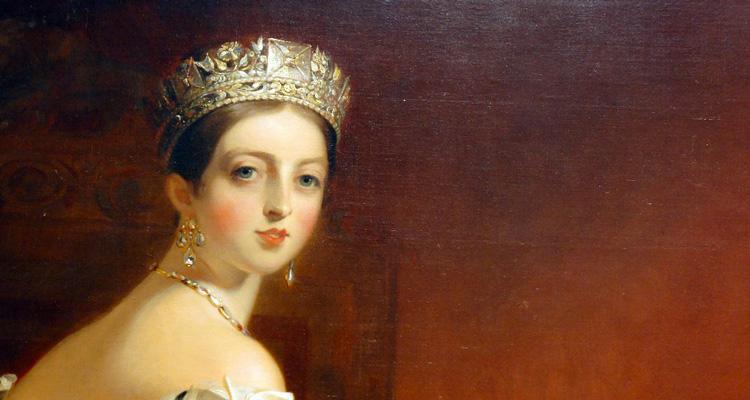Concetti Chiave
- Il periodo vittoriano prende il nome dalla regina Vittoria, simbolo della nazione, ed è caratterizzato da pace, stabilità e crescita economica e demografica grazie al Congresso di Vienna.
- Fu un'epoca complessa e contraddittoria: l'Inghilterra era potente e ricca, ma con forti disparità tra ricchi e poveri, inclusi problemi di povertà, ingiustizia e lavoro minorile.
- Colonialismo e patriottismo furono importanti, con esempi letterari come "Il libro della giungla" di Kipling; tuttavia, anche la teoria dell'utilitarismo di Bentham e le critiche di Dickens a essa emergono.
- La letteratura vittoriana vide una comunione tra scrittori e lettori, con i romanzi che divennero il genere più popolare, trattando temi sociali come la Rivoluzione Industriale e la lotta per la democrazia.
- I romanzi vittoriani si dividono in tre fasi: l'inizio con Dickens e temi umanitari, la metà con la persistenza di tradizioni romantiche e gotiche, e la fine con autori come Hardy e Wilde che esplorano la moralità e la corruzione.
Indice
Victorian Age: general political, economical, social and cultural aspects
The word 'Victorian' derives from Queen Victoria who ruled from 1837 to 1901 and became the symbol of the nation so that he gained the trust of lot of European countries.In was during this age that the effects of The Congress of Vienna (1814-1815) that brought pace, stability, an increment of economic activities, demographic growth, the enlargement of universal suffrage and the affirmation of liberalism.
As a matter of fact the end of XIX century was the beginning of Belle Époque in Europe.
The Victorian Age is remembered as complex and contradictory period, because England was a very rich and powerful nation, however, there was a very big difference between the living conditions of the rich and poor.
There were positive and negative aspects.

Positive aspects were: progress, stability, great social reforms and English colonial empire, in fact England colonized lots of countries like India and we can remember 'The book of the Jungle' wrote by Rudyard Kipling as an example of this phenomenon. Colonialism influenced patriotism and ideas of racial superiority.
Negative aspects were: poverty, injustice and social unrest, but also child labour. This contest let Jeremy Bentham develop his theory of Utilitarism which was a very important theory that said only things that produce happiness are useful. But Charles Dickens attacked the utilitarism in some of his novels where the main characters were poor children who lived in workhouses and had to experiment sufferings and oppressions.
An important scientific discovery made during this years was the origin of species by Charles Darwin.
Explanation of Victorian literature
During the Victorian Age for the first time there was a communion of interests and opinions between writers and readers. One reason of this was the spread of literature also with circulating libraries and various periodicals. Novels became the most popular form of literature, they were read aloud within the family. The novelist felt they had a moral and social responsibility so that they told about social changes like Industrial Revolution, the struggle for democracy and the growth of towns.We can divide Victorian novels in three groups:
1) The Early-Victorian Novel, with writers like Charles Dickens who told about social and humanitarian themes in his works Oliver Twist, David Copperfield, Hard Times, Great Expectations and A Christmas Carol.
2) The Mid-Victorian Novel, was linked to the persistence of Romantic and Gothic traditions.
For example during the Victorian Age an important cultural aspect was the Gothic Revival which is linked to Medievalism and Romanticism and its tendency to not consider Middle Age a useless or dark as it was believed. Horace Walpole was the first artist to use the adjective Gothic as a synonym for vandal but as a way to remember and revitalise ancient glory of societies.
3) The Late-Victorian Novel, with authors like Thomas Hardy and Oscar Wilde whose fame mainly come from his masterpiece The picture of Dorian Gray. Here it is analysed the price of eternal beautyand youth and, transversally, the price of always being perfect for social standards. Morality and corruption are questioned, their limits are sought as well as the human’s individuality.
Domande da interrogazione
- Quali furono gli aspetti positivi e negativi dell'Età Vittoriana?
- Come influenzò il colonialismo il patriottismo e le idee di superiorità razziale durante l'Età Vittoriana?
- Quali furono le principali scoperte scientifiche dell'Età Vittoriana?
- Quali erano le caratteristiche principali della letteratura vittoriana?
- Chi furono alcuni dei principali autori del romanzo vittoriano e quali temi trattarono?
Gli aspetti positivi includevano progresso, stabilità, grandi riforme sociali e l'impero coloniale inglese. Gli aspetti negativi comprendevano povertà, ingiustizia, disordini sociali e lavoro minorile.
Il colonialismo rafforzò il patriottismo e le idee di superiorità razziale, come illustrato da opere come "Il libro della giungla" di Rudyard Kipling.
Una delle principali scoperte scientifiche fu "L'origine delle specie" di Charles Darwin.
La letteratura vittoriana era caratterizzata da una comunione di interessi tra scrittori e lettori, con romanzi che trattavano temi sociali come la Rivoluzione Industriale e la lotta per la democrazia.
Tra i principali autori vi furono Charles Dickens, che trattò temi sociali e umanitari, e Oscar Wilde, che esplorò la moralità e la corruzione in opere come "Il ritratto di Dorian Gray".








 Accedi a tutti gli appunti
Accedi a tutti gli appunti
 Tutor AI: studia meglio e in meno tempo
Tutor AI: studia meglio e in meno tempo